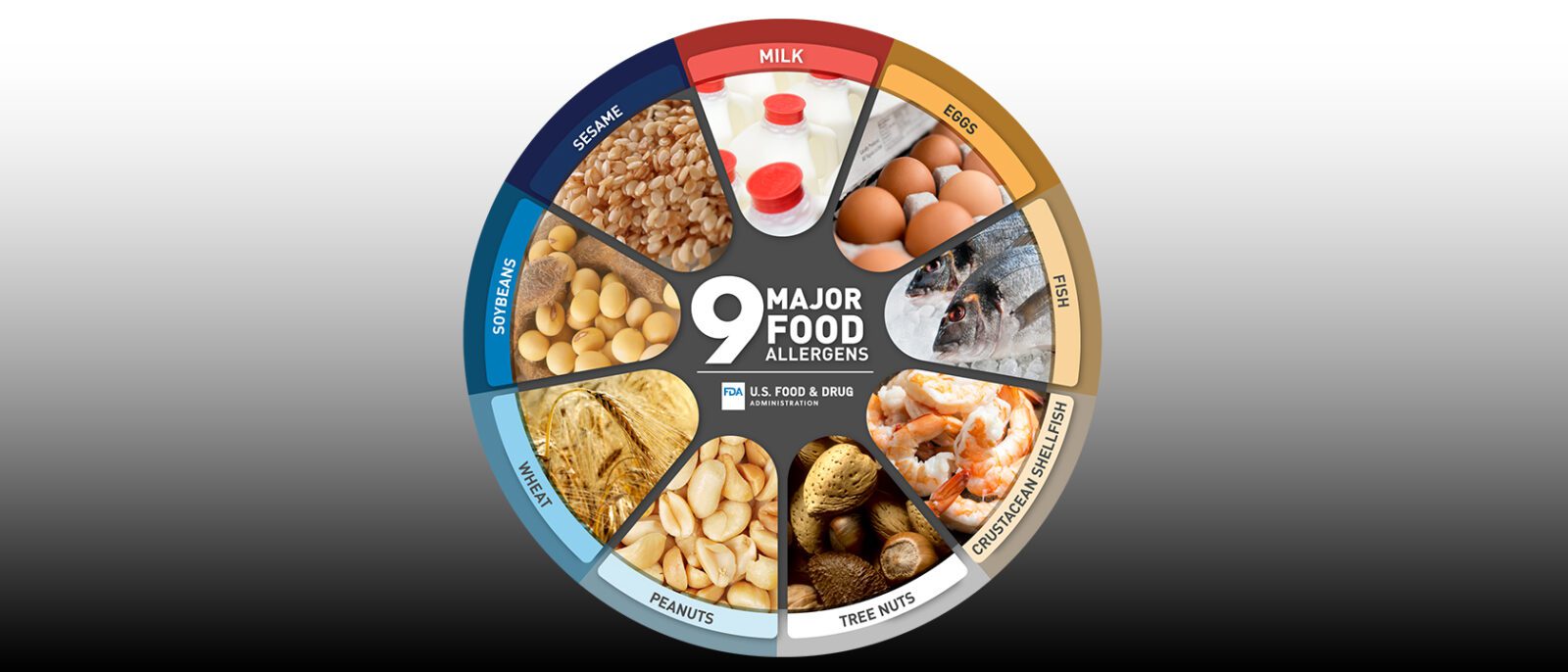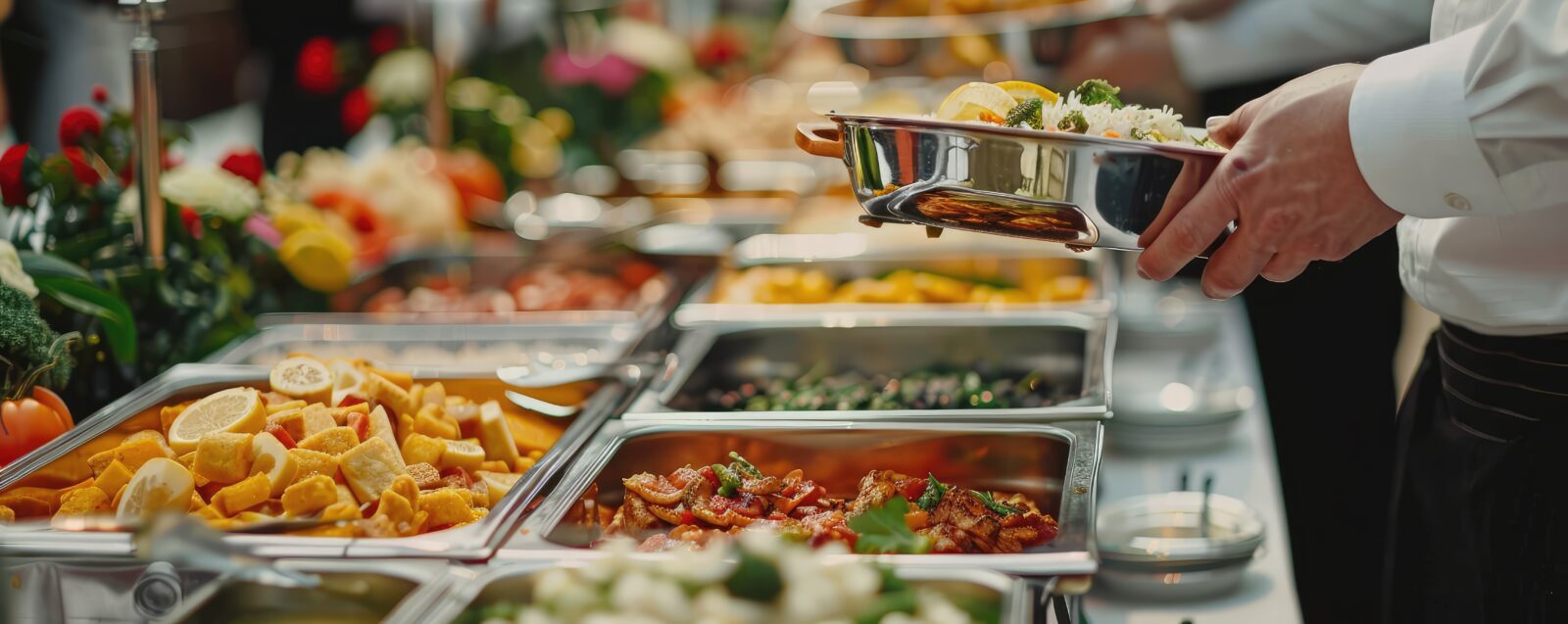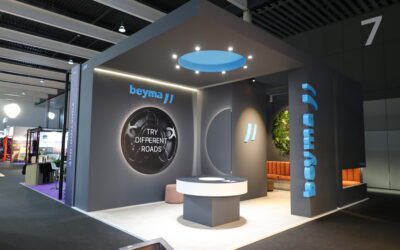
Featuring insights from Tracy Stuckrath, founder of Thrive! Meetings and Events and host of the Eating at a Meeting podcast.
If there’s one thing that gets people talking at events — aside from questionable keynote speeches — it’s the food. And we’re not talking about generic sandwiches and sad coffee. We’re talking about the kind of food that leaves an impression. For over 30 years, Tracy Stuckrath has been on a mission to make sure that the food at events does more than just fill stomachs. It should be safe, inclusive, and, dare we say, memorable. Her advice can transform how you approach food at your next event or trade show.
Wanna skim the article? Use the links below:
Why F&B Matters More Than Just Avoiding “Hangry” Attendees
The Event Food Chain (And No, It’s Not About the Buffet Line)
Top 9 Allergens You Can’t Ignore
What to Ask Your F&B Partners (Besides “What’s for Dessert?”)
Why F&B Matters More Than Just Avoiding “Hangry” Attendees
Food has the power to connect people, and at events, it can make or break your attendees’ experience.
Let’s face it: breaking bread with someone can transform a relationship — and we’re not talking about the kind of bread that’s leftover from yesterday’s buffet. Tracy shared a story of a client who had a notoriously difficult customer. Before lunch, her friend sent an array of menus — vegan, gluten-free, regular — so the client could choose. The customer actually called to thank him, delighted that he wouldn’t be stuck gnawing on lettuce scraps. Talk about a win.
The point is, if your guests don’t feel included because they can’t eat anything, they’ll be too busy grumbling about their empty stomachs to focus on your pitch — or that million-dollar deal you’re trying to close.
And, a quick tip: Offering options that are both gluten and dairy free can solve a lot of problems upfront, covering some of the most common dietary needs.
The Event Food Chain (And No, It’s Not About the Buffet Line)
Delivering stellar F&B isn’t just about the food itself. It’s about the entire “event food chain,” which includes attendees, event managers, organizers, catering managers, chefs, servers, and bartenders. The servers and bartenders are the real MVPs at any event. They are the face of your F&B service, and let’s be real — they’re also the ones attendees will ask the tough questions. So, make sure they’re prepped with the right answers, like whether that tasty-looking dip is gluten-free or contains enough dairy to send someone running.
An important tip: Label your food clearly, showcasing allergen information and dietary accommodations like gluten-free or dairy-free options. This transparency adds a layer of care and concern for your attendees. Besides, nobody wants to spend 10 minutes playing Sherlock Holmes with their lunch.
Top 9 Allergens You Can’t Ignore

When it comes to planning food and beverage for your event, you absolutely cannot skip understanding the Top 9 allergens. These foods have the potential to seriously impact your attendees, and not in a good way. In the U.S., the Top 9 allergens are:
- Fish
- Shellfish
- Tree nuts
- Peanuts
- Sesame
- Soy
- Milk
- Eggs
- Wheat
It’s important to note that while gluten often gets lumped into this category, it’s technically not one of the Top 9 allergens in the U.S. (though in Europe, it is). So, while wheat is listed, gluten doesn’t always mean the same thing.
Being mindful of these allergens — and clearly labeling foods that contain them — can literally be a lifesaver. And don’t forget dietary preferences like vegan, vegetarian, pescatarian, and religious needs like halal or kosher. The more inclusive your menu, the more welcome your attendees will feel.
What to Ask Your F&B Partners (Besides “What’s for Dessert?”)
When you’re working with catering, don’t just nod along and hope for the best. Be clear upfront about what you need. Some crucial questions include:
- Do you have gluten-free and dairy-free options, or are we about to serve the world’s most expensive breadbasket?
- Are ingredients labeled, especially for buffets?
- What allergen-free options do you offer? (And no, a bowl of fruit doesn’t count as dessert.)
Remember, allergies can be life-threatening, while dietary preferences may stem from religious or lifestyle choices. It’s essential to distinguish between the two and ensure your F&B accommodates as many needs as possible.

Keep Your Budget Intact (Without Starving Your Guests)
Food costs are going up (thanks, inflation), but that doesn’t mean you need to send your attendees home hungry. Here’s how to balance the budget:
- Labeling buffet items lets attendees serve themselves, which cuts down on the need for custom plates.
- Crunch the numbers. If you know only 50% of the 500 people you invited show up to breakfast, don’t order 500 croissants. Unless you’re planning to run a bakery post-event, it’s just waste.
- Go local! Not only does it cut down on costs, but attendees love trying local favorites. Plus, it gives you bonus points for thoughtfulness.
And here’s a little secret: Tracking what your attendees actually eat means you can adjust moving forward. If no one’s touched the bagels in two years, let them go. Focus on what works — and what’s still on the plate.
The Real Event Game Changer: Thoughtful F&B
If there’s one piece of advice event planners need to hear, it’s this: Spend more time planning your F&B. We’re not talking about checking off a list and calling it a day. F&B is often the most expensive line item in your event budget, and it’s what people will remember. Not the AV setup, not the fancy lights. The food.
Even in your trade show booth, it may not be your biggest spend, but it’s still significant. Make sure you’re doing it right — for your attendees and your budget.
In short: A little more thought (and a few more labels) can turn your F&B from “fine, I guess” to “where did they get this?!” And trust us, your attendees will notice the difference.

For more tips on thoughtful, inclusive food and beverage planning, connect with Tracy Stuckrath at Thrive! Meetings and Events or tune into her Eating at a Meeting podcast. Visit thrivemeetings.com to learn how they can help elevate your event’s F&B strategy.


